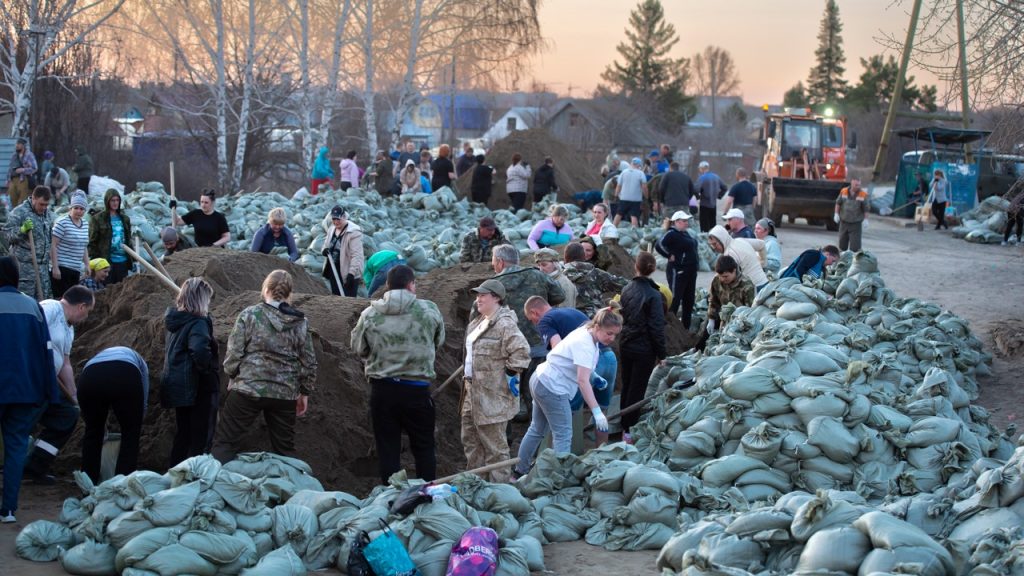Flooding in Russia’s Kurgan region along the border with Kazakhstan has caused more than 5,000 properties to be flooded and 15,000 people to be evacuated. In the Orenburg region, the Ural River’s water levels have been decreasing but 12,000 residences remain flooded. More than 3,000 people have been evacuated in the Tyumen region, where emergency workers are monitoring dam conditions and distributing sandbags to prevent further flooding. Kazakhstan has declared a state of emergency in 10 out of 17 regions, with seven people reported dead and thousands of houses flooded.
Experts have pointed to various factors contributing to the floods, including large snow reserves melting, frozen soil preventing absorption of rain or melted snow, and a significant release of water from a reservoir. Despite water levels starting to drop in some overflowing rivers in Russia, flooding remains widespread and efforts are ongoing to mitigate the damage and assist affected residents. The Russian Emergencies Ministry is working to address the significant impact of the flooding in multiple regions, with thousands of properties affected and many people requiring evacuation.
The situation in Kazakhstan has also been severe, with authorities declaring a state of emergency in the majority of the country’s regions due to flooding. Several people have lost their lives as a result of the floods, and thousands of homes have been submerged. These catastrophic events have prompted a coordinated response from emergency services, including the distribution of sandbags and ongoing monitoring of dam conditions in affected areas. The challenges posed by the flooding have required significant resources and collaborative efforts to ensure the safety and well-being of those impacted.
Efforts to address the flooding crisis include distributing sandbags to shore up defenses against rising waters and monitoring dam conditions to prevent breaches. Emergency workers are focused on providing assistance to those affected by the floods, including coordinating evacuations and assessing the damage to properties. The challenges posed by the flooding, necessitating large-scale evacuation and emergency response efforts, underscore the severity of the situation in the region. Multiple factors, such as the melting of snow reserves and frozen soil preventing absorption of water, have contributed to the widespread flooding plaguing these areas.
Despite the gradual decrease in water levels in some rivers, the impact of the floods remains significant in affected regions. Emergency workers continue to monitor conditions and provide support to those in need, while authorities are working to address the underlying causes of the flooding. The coordination of resources and efforts from various agencies is crucial in responding to the ongoing crisis and mitigating the damage caused by the floods. The resilience and response of communities affected by the flooding will be key in managing the aftermath of these natural disasters and ensuring the safety and well-being of residents in the region.


